12 Underused Produce Picks That Will Revolutionize Your Side Dishes
An abundance of flavors awaits you as soon as you can work up the gumption to snatch that odd-looking root vegetable or unrecognizable leafy green from the grocery shelf. Expand your culinary horizons with confidence by swapping in some produce stars you didn’t know you needed.
1. Daikon radish
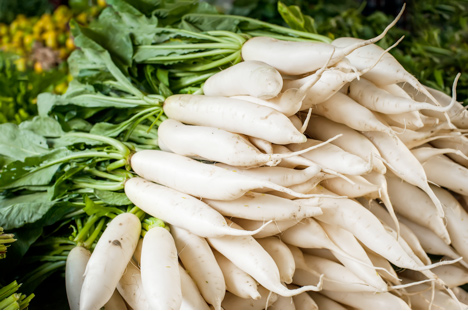
These giant root vegetables are popular in most Asian cuisines, where they are often pickled or stir fried. You can prepare them in the same manner as carrots: roasted, grated into slaws and salads, or cooked into stews and soups. Daikon radish is easy to grow in the garden, and it even improves your soil.
Recipe: Japanese salad
2. Persimmons
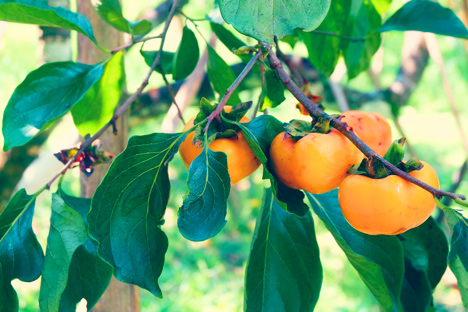
An oft-overlooked fall fruit that is native to most of the eastern U.S., persimmons are perfect for Midwestern Thanksgiving sides and desserts. Persimmon pudding is a classic dish, but these sweet tomato lookalikes can be used caramelized in salads too.
Recipe: Persimmon cookies
3. Celeriac
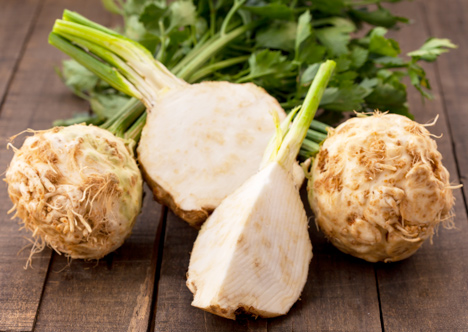
At first glance, this celery root might look hideous, but underneath the tough skin is an ivory flesh full of nutrients and dietary fiber. The tuber can be fried or roasted like potatoes or mashed and puréed for soups.
Recipe: Celery root puree with pear anjou
4. Fennel
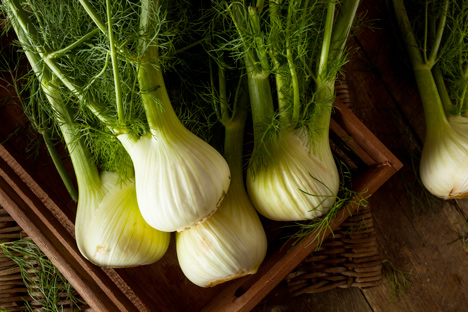
This unique vegetable has enjoyed popularity in recent years as chefs recognize its versatility. The mild licorice flavor of raw fennel fronds and bulbs are a tangy addition to salads, but chopped, roasted bulbs take on an excitingly sweet flavor that begs to be paired with seared fish filets.
Recipe: Apple and fennel salad
5. Chayote squash
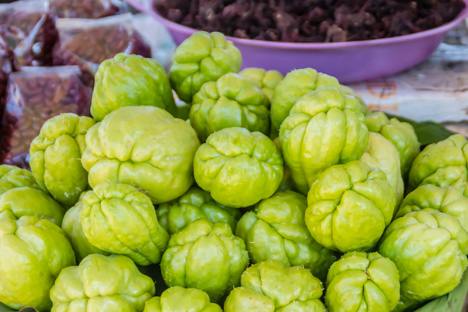
Even though this Mexican gourd has been cultivated for centuries, you may have only recently started seeing them in grocery stores. Chayote is the poster child for squash versatility, taking on any flavors you can throw at it. Sauté it with cumin and paprika, or make stuffed chayotes in lieu of stuffed green peppers.
Recipe: Chayote pie
6. Turnips
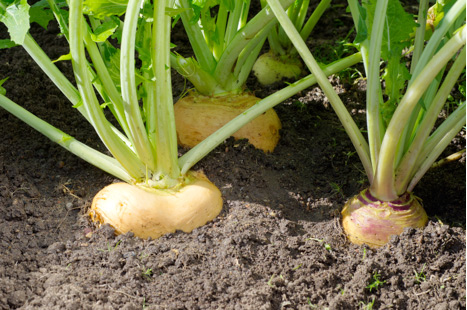
If you’re tired of constant potatoes, try swapping in some low-carb turnips for your next mashed or roasted side. The tuber and the greens of this easy spring grower deliver a mustardy kick. You can even chop some raw and serve them on your next vegetable tray.
Recipe: Spinach and turnip soup
7. Kohlrabi
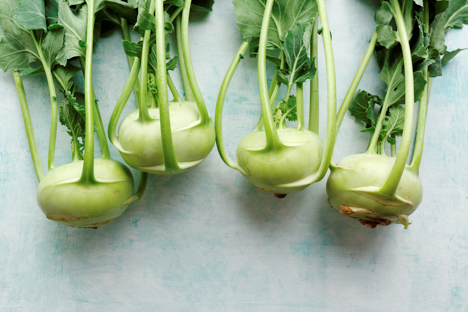
Another easy-going brassica that’s showing up in more and more farmer’s markets, kohlrabi excels in Indian curries. The bulbous head can also be grated into slaws or even sliced, battered, and fried like zucchini.
Recipe: Curtis Stone’s homemade-chicken-soup-makes-me-feel-better soup
8. Chard
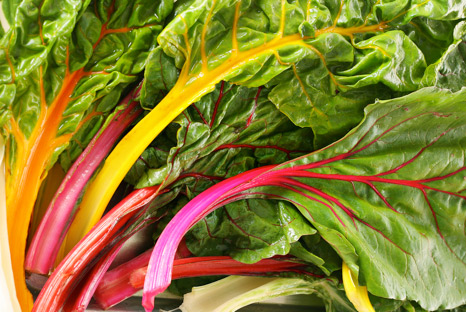
The nutritional value of this colorful green rivals that of spinach and kale, but somehow chard never received the same attention. Its unique sweetness and antioxidant properties make it a no-brainer for sautéing, creaming, and even raw-eating.
Recipe: Turkey and cider-braised greens
9. Yuca (cassava)
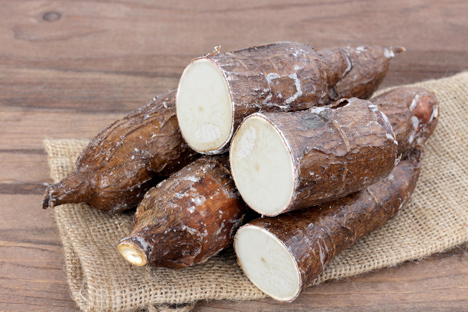
Baked yuca fries are an exciting, sweet alternative to the potato variety. You can find these ancient tubers at most international or Latin American grocery stores. After scoring and peeling yuca, cook them any way you would a potato.
Recipe: Baked yuca fries
10. Watercress
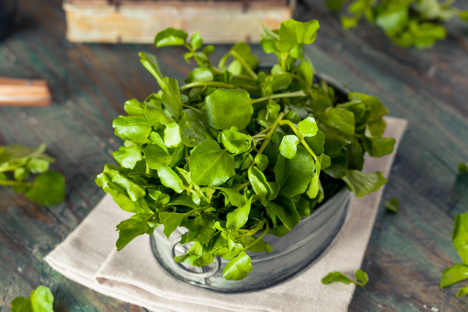
Even if you’re not treating hair loss or bronchitis, this little leafy green packs a big, peppery punch in soups, salads, and everything else. Serve fresh watercress snippets on your star dishes for a glorious presentation at your next dinner party.
Recipe: Roasted pumpkin salad
11. Jicama
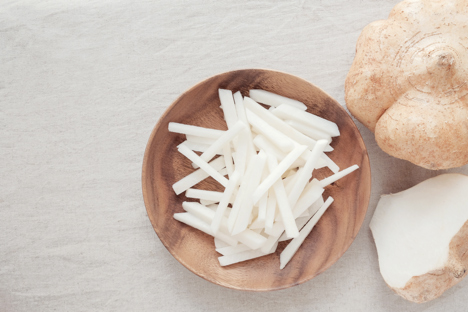
This Latin American produce favorite adds an apple-like crunch to a variety of dishes. Chop it up thinly (after peeling) and add it to guacamole or salsa, or make jicama matchsticks for spring rolls and garden wraps.
Recipe: Jicama dill “potato” salad
12. Pawpaw
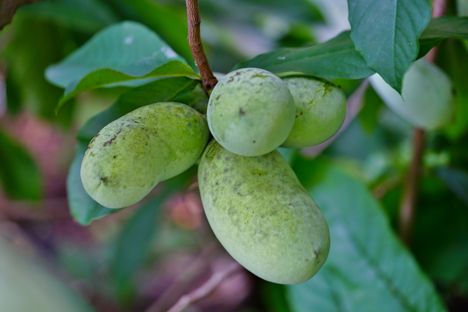
The native tree fruit that delivers the taste of the tropics in the temperate U.S. is still, somehow, a relative secret in America’s kitchens. The flesh of pawpaw fruits is a cross between a banana and a mango, which means you should be taking advantage of this native in breads, pudding, and ice cream as soon as possible.
Recipe: Pawpaw pudding
Post Travels: 10 Wild Animals to See on Your Next Vacation
From swimming with turtles in Hawaii, to riding a camel in Cabo, to howling with wolves in Canada, animal adventures have a knack for bringing out a family’s wild side. Whether you make a splash, or stay warm and dry, kids and critters have a way of creating vacation magic. Read on for inspiration on where to take off next. But wherever you go, don’t forget your camera.

1. Snorkel with Turtles in Maui, Hawaii
Spending some quality time with turtles is as easy as dropping your towel on the sand at Ka’anapali Beach and walking right into the water at Maui’s Pu’u Keka’a, or Black Rock. Green sea turtles, known as Honu in Hawaiian, are regulars here, making it a favorite snorkeling spot.

2. Watch Humpback Whales in Maui, Hawaii
December through May, Ka’anapali Beach is also a favorite spot for watching the thousands of humpback whales that spend their winter vacation in the waters surrounding Maui. Trilogy whale watching catamarans load directly from the beach, and tours last about two hours. Knowledgeable naturalists are on board for every tour and happy to answer questions about the whales and their habitat.
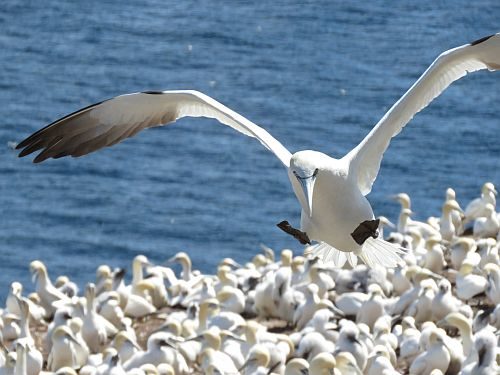
3. Behold the Birds on Bonaventure Island, Quebec, Canada
More than 200,000 birds have an affection for nesting on the scenic island, but it’s the northern gannet colony, totaling more than 100,000, that dominates. Bonaventure Island is a summer destination. Getting there requires a quick ferry ride from Percé and a three-mile (roundtrip) family-friendly hike.

4. Swim with Manatees in Crystal River, Florida
The Crystal River National Wildlife Refuge is the winter home for what’s believed to be North America’s largest herd of wild manatees. Less than a 90-minute drive north of Tampa, it’s the only place in the United States where visitors are allowed to swim with the so-called sea cows. Actually, it’s more like floating than swimming. The less you move, the move likely curious manatees are to come close and say hello.

5. Watch Beluga Whales in Tadoussac, Quebec, Canada
Beluga whales live year round in the St. Lawrence Estuary. Whale watching boats are plentiful May through October, but since belugas are bright white and tend to move in groups, they also tend to be easy to spot from Tadoussac’s easily accessible half-mile walking trail, Pointe-de-l’Islet.

6. Ride Camels in Cabo San Lucas, Mexico
It’s just like horseback riding, except you stroll through the sand in the company of a camel. Some of the dozen-plus camels on the Outback and Camel Safari are rescues. Tequila tasting and tortilla making lessons happen after folks hop down from saddled humps.

7. Peek at Polar Bears in Churchill, Canada
Home to what’s said to be the only polar bear jail in the world, Churchill, Manitoba has a population of 900 to 1,000 polar bears. Fall is typically the best time of year to spot the great white bears. Frontiers North Adventures organizes family-friendly itineraries that include Tundra Buggy® rides (think a vehicle that’s a cross between a school bus and a monster truck) in the Churchill Wildlife Management Area, a stretch of accessible arctic known for its polar bear population.

8. Hold a Seahorse in Kona, Hawaii
Take a break from the beach to visit Ocean Rider Seahorse Farm. Set on a three-acre oceanfront farm, families can see baby seahorses, pregnant papa seahorses, and get the chance to hold a seahorse, all while learning about conservation and preservation. Tours run Monday through Friday and last about 90 minutes. Reservations are highly recommended.
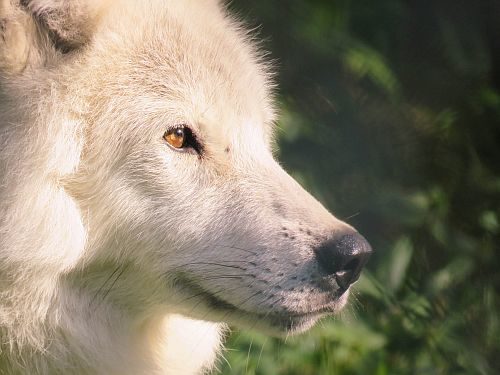
9. Howl with Wolves in Girardville, Quebec, Canada
Get cozy in a cabin at Aventuraid, a wildlife observation center in Canada’s Quebec province. Fenced enclosures ranging from two-and-a-half to five acres are home to three packs of semi-wild arctic and grey wolves. An overnight stay isn’t a must—families can watch the wolves from secure trails—but propping up pillows to watch wolves after dark is worth breaking all the bedtime rules.

10. Admire Monk Seals in Kauai, Hawaii
Just about everyone enjoys stretching out on warm sand for a snooze, Hawaiian monk seals included. Monk seals haul out onto beaches all around Kauai to rest. Absolutely stop to admire the endangered mammals if you’re lucky enough to cross sandy paths, but keep your distance. If volunteers haven’t roped off the area surrounding a seal on the beach, stay at least 150 feet away so they can catch up on their beauty sleep.